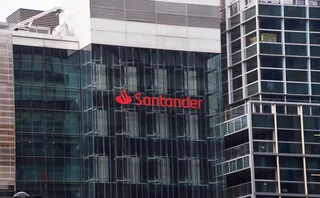
Coal House of the Year, Asia: Deutsche Bank

For impressive volumes growth, an aggressive expansion into the physical market and innovative balance-sheet solutions, Deutsche Bank wins Energy Risk's 2011 Coal House of the Year, Asia award.
The bank's global coal business volumes have grown by seven times in the past two years, with two- to threefold growth seen in Asia.
"This has been the result of a definite decision to offer balance-sheet/funding solutions to clients, with derivatives execution and physical capabilities around that," says Stuart Smith, Deutsche Bank's head of Asian commodity sales.
"We lead with balance sheet, so we're here to finance and help our clients out with their funding requirements," says Smith. "That often requires taking on physical ownership of the underlying product. Our physical presence in the market is not focused on making a margin out of buying and selling cargoes. Whenever we enter into a structure where we are buying and selling physical coal, it's really about trying to help our clients with the financing angle."
The bank has grown geographically across Asia and currently operates in the major coal markets of Australia, Indonesia, Malaysia, the Philippines and China and across all the major coal specifications.
"We have the ability to price and value off-spec coals beyond the straight indexes in the marketplace," says Smith. "We are quite happy to price and handle any coal. We are very comfortable going globally and looking at any supply source." Smith also sees future product offerings in coking coal and metallurgical coal. Geographically, he sees Indonesia as having the best growth potential for the bank's coal business.
"I would look for us to double or triple our Indonesian coal business," he says. "It's an extremely large producing region that is capital hungry and has a lot of infrastructure needs. These are the types of regions where our kind of structures and financing plays can really work."
The bank also prides itself on the help it was able to offer clients in the wake of the earthquake and tsunami in Japan in March this year. Many logistical problems were thrown up and firms were tested in their ability to interpret contracts in potential force majeure situations. "There have been certain circumstances where our clients have called on us to perform in some fairly difficult situations. Taking an approach where you solve these issues in a manner that benefits your client is important for us."
In these volatile market conditions, Deutsche Bank has been successful in creating producer-centric prepay structures where a loan is offered against forward production. "This might be a financial prepay or a prepay upfront where we take physical delivery of the product," says Smith. "For example, a company in China buying coal from Australia will have a long time-lag before it burns that coal, meaning working capital could be tied up for 40 to 50 days. Where we can help, for example, is in taking ownership of that coal, stock-piling it in a bonded location and then selling it back to the client in parcels as and when it needs it."
A specific example of a deal using the bank's balance sheet to create value for the client was a prepaid coal forward with a Russian coal producer who wanted to protect itself against a sharp fall in the price of coal. The Deutsche Bank coal team constructed a zero-cost hedge that guaranteed the client would receive at least $95 per metric tonne and could receive up to $104/metric tonne, without requiring it to pay any premium.
The mechanics of the deal were fairly straightforward: a simple prepaid forward with a collar option that set the floor price on the amount paid. At $60 million, the size of the deal stood out. "We believe this is the largest prepaid coal forward ever executed with a Russian company," says Smith.
The bank's combination of physical and financial capabilities to provide execution, funding and risk management solutions has differentiated Deutsche Bank in the coal space this year, Smith believes. "It's bringing the best of a traditional bank's capabilities together with the ability that a commodity house has with the underlying product," he says.
Only users who have a paid subscription or are part of a corporate subscription are able to print or copy content.
To access these options, along with all other subscription benefits, please contact info@risk.net or view our subscription options here: http://subscriptions.risk.net/subscribe
You are currently unable to print this content. Please contact info@risk.net to find out more.
You are currently unable to copy this content. Please contact info@risk.net to find out more.
Copyright Infopro Digital Limited. All rights reserved.
As outlined in our terms and conditions, https://www.infopro-digital.com/terms-and-conditions/subscriptions/ (point 2.4), printing is limited to a single copy.
If you would like to purchase additional rights please email info@risk.net
Copyright Infopro Digital Limited. All rights reserved.
You may share this content using our article tools. As outlined in our terms and conditions, https://www.infopro-digital.com/terms-and-conditions/subscriptions/ (clause 2.4), an Authorised User may only make one copy of the materials for their own personal use. You must also comply with the restrictions in clause 2.5.
If you would like to purchase additional rights please email info@risk.net
More on Risk management
As supplier risk grows, banks check their third-party guest lists
Dora forces rethink of KRI and RAF frameworks amid reappraisal of what constitutes a key counterparty
Dora flood pitches banks against vendors
Firms ask vendors for late addendums sometimes unrelated to resiliency, requiring renegotiation
Quant Finance Master’s Guide 2025
Risk.net’s guide to the world’s leading quant master’s programmes, with the top 25 schools ranked
Regionals built first-line defences pre-CrowdStrike
In-business risk teams vary in size and reporting lines, but outage fears are a constant
Op risk data: Santander in car crash of motor-finance fail
Also: Macquarie fined for fake metals trade flaws, Metro makes AML misses, and Invesco red-faced over greenwashing. Data by ORX News
Public enemy number one: the threat to information security
Nearly half of domestic and regional banks report risk appetite breaches amid heightened sense of insecurity
Credit risk transfer, with a derivatives twist
Dealers angle to revive market that enables them to offload counterparty exposures, freeing up capital
Op Risk Benchmarking 2024: the banks
As threats grow and regulators bore down, focus shifts to the first line







